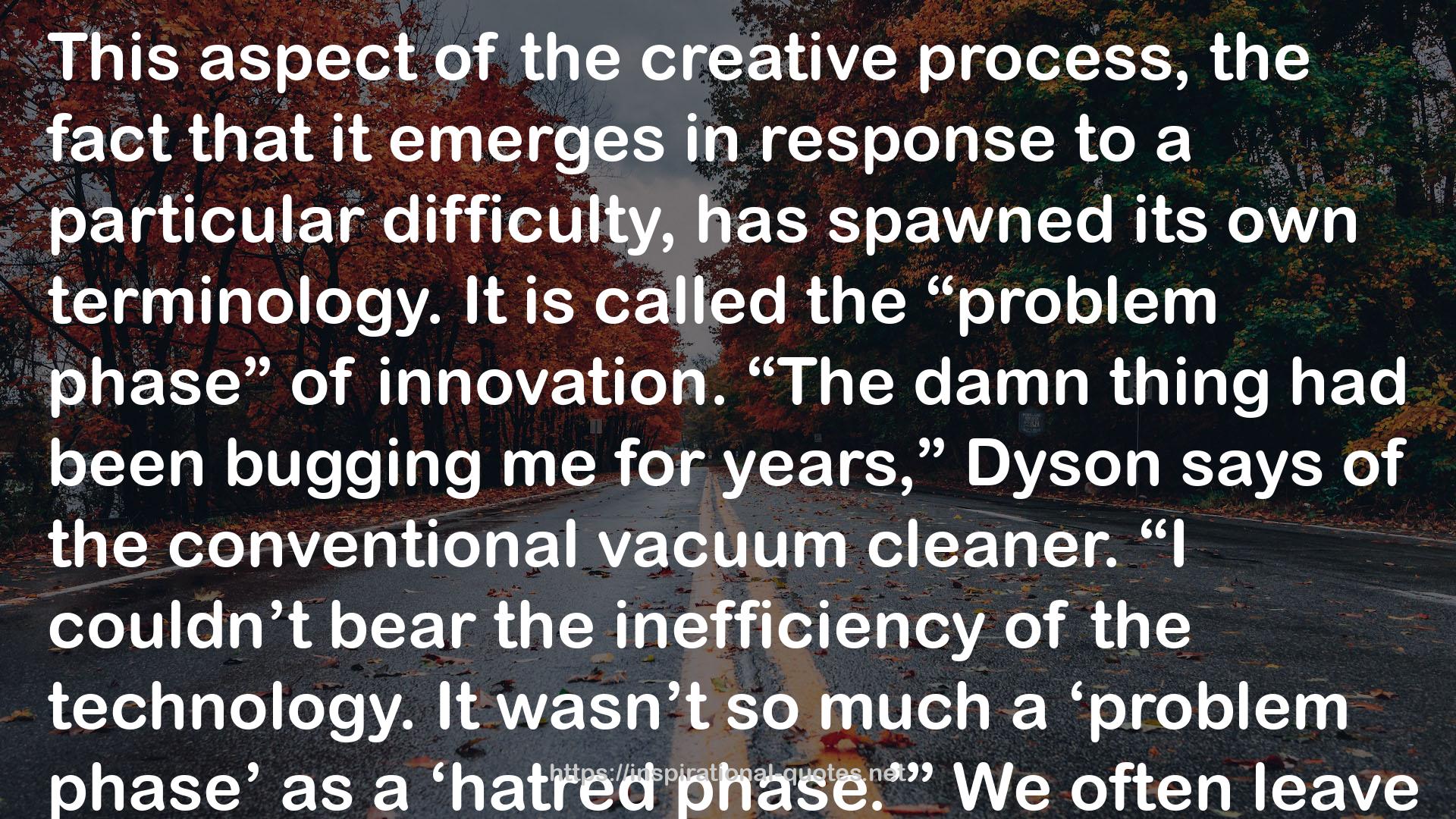" This aspect of the creative process, the fact that it emerges in response to a particular difficulty, has spawned its own terminology. It is called the “problem phase” of innovation. “The damn thing had been bugging me for years,” Dyson says of the conventional vacuum cleaner. “I couldn’t bear the inefficiency of the technology. It wasn’t so much a ‘problem phase’ as a ‘hatred phase.’” We often leave this aspect of the creative process out of the picture. We focus on the moment of epiphany, the detonation of insight that happened when Newton was hit by the apple or Archimedes was taking a bath. That is perhaps why creativity seems so ethereal. The idea is that such insights could happen anytime, anywhere. It is just a matter of sitting back and letting them flow. But this leaves out an indispensable feature of creativity. Without a problem, without a failure, without a flaw, without a frustration, innovation has nothing to latch on to. It loses its pivot. As Dyson puts it: “Creativity should be thought of as a dialogue. You have to have a problem before you can have the game-changing riposte. "
― Matthew Syed , Black Box Thinking: Why Some People Never Learn from Their Mistakes - But Some Do
